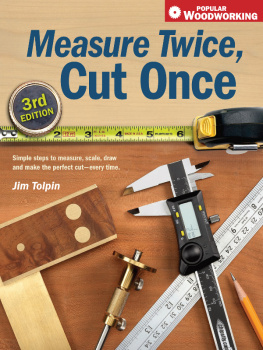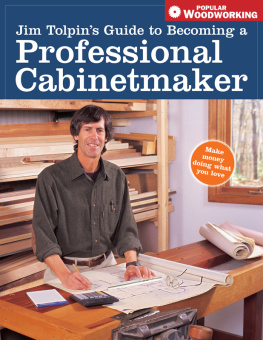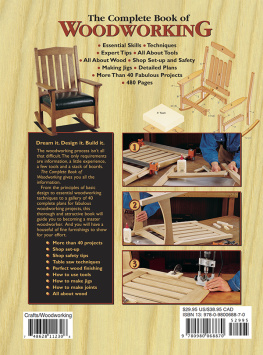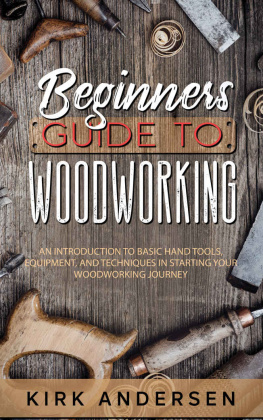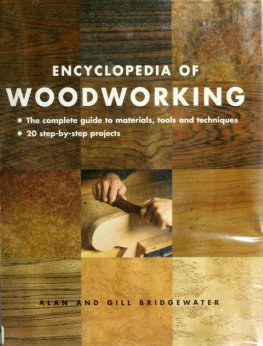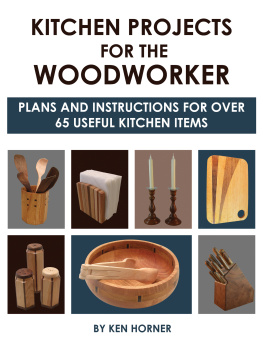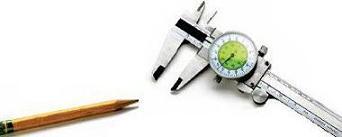
Measure Twice, Cut Once
3rd EDITION
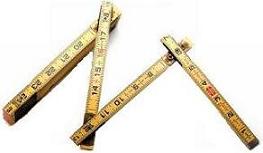
Jim Tolpin

www.popularwoodworking.com
Measure Twice, Cut Once, 3rd Edition. Copyright 2007 by Jim Tolpin. Printed and bound in China. All rights reserved. No part of this book may be reproduced in any form or by any electronic or mechanical means including information storage and retrieval systems without permission in writing from the publisher, except by a reviewer, who may quote brief passages in a review. Published by Popular Woodworking Books, an imprint of F+W Publications, Inc., 4700 East Galbraith Road, Cincinnati, Ohio, 45236. First edition.
Distributed in Canada by Fraser Direct
100 Armstrong Avenue
Georgetown, Ontario L7G 5S4
Canada
Distributed in the U.K. and Europe by David & Charles
Brunel House
Newton Abbot
Devon TQ12 4PU
England
Tel: (+44) 1626 323200
Fax: (+44) 1626 323319
E-mail: postmaster@davidandcharles.co.uk
Distributed in Australia by Capricorn Link
P.O. Box 704
Windsor, NSW 2756
Australia
Visit our Web site at www.popularwoodworking.com for information on more resources for woodworkers.
Other fine Popular Woodworking Books are available from your local bookstore or direct from the publisher.
11 10 09 08 07 5 4 3 2 1
Library of Congress Cataloging-in-Publication Data
Tolpin, Jim
Measure twice, cutcrtl once / by Jim Tolpin.
p. cm
ISBN-13: 978-1-55870-809-9 (pbk. : alk. paper)
ISBN-13: 978-1-55870-955-3(EPUB)
ISBN-10: 1-55870-809-X (pbk. : alk. paper)
eISBN: 978-1-44031-760-6
1. WoodworkAmateurs manuals. I. Title.
TT185.T64 2007
684.08dc22
2006039348

ACQUISITIONS EDITOR: David Thiel
SENIOR EDITOR: Jim Stack
DESIGNER: Brian Roeth
PHOTOGRAPHER: Craig Wester
PRODUCTION COORDINATOR: Jennifer Wagner
READ THIS IMPORTANT SAFETY NOTICE
To prevent accidents, keep safety in mind while you work. Use the safety guards installed on power equipment; they are for your protection. When working on power equipment, keep fingers away from saw blades, wear safety goggles to prevent injuries from flying wood chips and sawdust, wear hearing protection and consider installing a dust vacuum to reduce the amount of airborne sawdust in your woodshop. Dont wear loose clothing, such as neckties or shirts with loose sleeves, or jewelry, such as rings, necklaces or bracelets, when working on power equipment. Tie back long hair to prevent it from getting caught in your equipment. People who are sensitive to certain chemicals should check the chemical content of any product before using it. The authors and editors who compiled this book have tried to make the contents as accurate and correct as possible. Plans, illustrations, photographs and text have been carefully checked. All instructions, plans and projects should be carefully read, studied and understood before beginning construction. Due to the variability of local conditions, construction materials, skill levels, etc., neither the author nor Popular Woodworking Books assumes any responsibility for any accidents, injuries, damages or other losses incurred resulting from the material presented in this book. Prices listed for supplies and equipment were current at the time of publication and are subject to change.
METRIC CONVERSION CHART
| to convert | to | multiply by |
| Inches | Centimeters | 2.54 |
| Centimeters | Inches | 0.4 |
| Feet | Centimeters | 30.5 |
| Centimeters | Feet | 0.03 |
| Yards | Meters | 0.9 |
| Meters | Yards | 1.1 |
dedication
This book is for the kids in my life: Coyote Karrick, Isaac Tolpin, Jacob Middleton, Nathan Middleton, Yuri Tolpin-Bates and Abel. They measure up no matter how you cut it.

ACKNOWLEDEGMENTS
For lending me encouragement and a bit of their woodworking wisdom: Teri Mielke, Daniel Neville and David Lewis.
Craig Wester for his photography.
And for his excellent editing skills: Jim Stack.
Special thanks also to Abatron, Inc., Bridge City Tool Works, Highland Hardware, Inc., Mr. J. Kirkham Jenner, Koh-I-Noor, Inc., Lee Valley Tools, Ltd., Rabone. Stanley Tools, Woodcraft and Lee Valley Tools, Ltd. for the use of their products for photography in this third edition. And to Abijah Reed and Franklin Sheehan for their suggestions.
ABOUT THE AUTHOR
Jim Tolpin has operated a finish carpentry and custom cabinetmaking business since 1969. He has written numerous books on the woodworking trade including BuildingTraditional Kitchen Cabinets; Jim Tolpins TableSaw Magic; Jim Tolpins Woodworking Wit & Wisdom and Jim Tolpins Guide to Becoming aProfessional Cabinetmaker.
table of contents
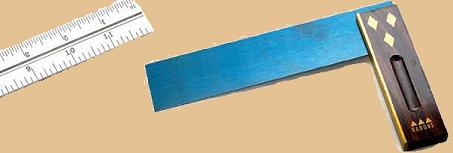
APPENDIX A
TOOL SUPPLIERS
APPENDIX B
FURTHER READING
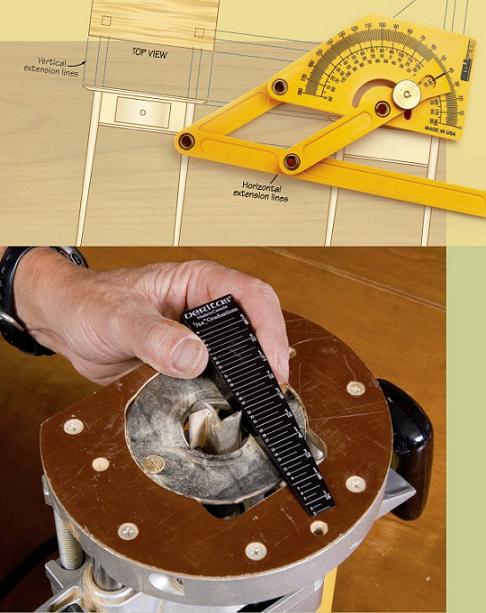
introduction

Measure twice, cut once.
How often has this venerable expression echoed tauntingly through the sawdust-filled chamber between my ears? The truth is, countless timesas often as Ive made critical cuts in very wrong places. I have to admit: If I had taken the time to measure twice, in all probability I would not be making the cut twice.
But I didnt write this book to drive home platitudes. I wrote it to help woodworkers learn to measure right the first time. To get the most out of your woodworking time, you must learn to lay out cutlines and assembly positions quickly and precisely. (While you are, of course, forever bound to checking your marks twice for good measure, only rarely should you discover that a mark belongs somewhere else.) Although the various measuring and marking techniques I cover may, at first glance, seem daunting, I assure you that layout is but another woodworking skill, a skill whose mastery is well within the reach of any woodworker.
This book begins with a discussion of the origins of our systems of measurement, concepts of proportion, and standards of furniture design. Please accept that learning about such things as golden sections and Vitruviuss exposition of human proportions is much more than an amusing glimpse into an esoteric world of ancient curiosities. I believe this knowledge to be basic information, wisdom really, that we woodworkers, wishing to become better woodworkers, should understand and respect. It makes little sense, after all, to take the time to lay out a complex piece of furniture, no matter how quickly and accurately, if its going to come out dog-ugly and not be functionally fit for the people who will use it.
Next page
